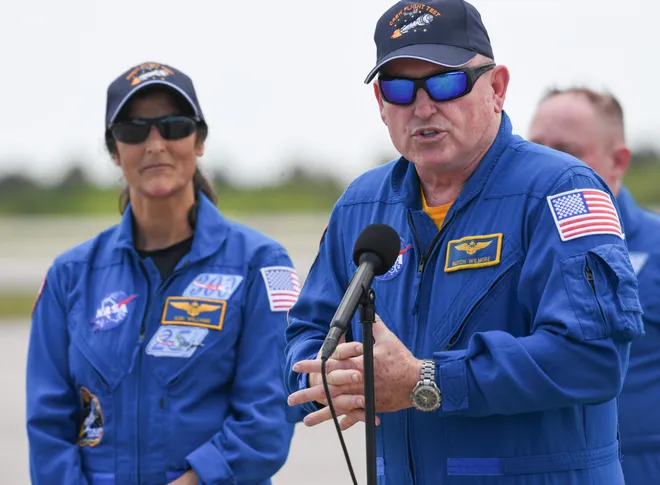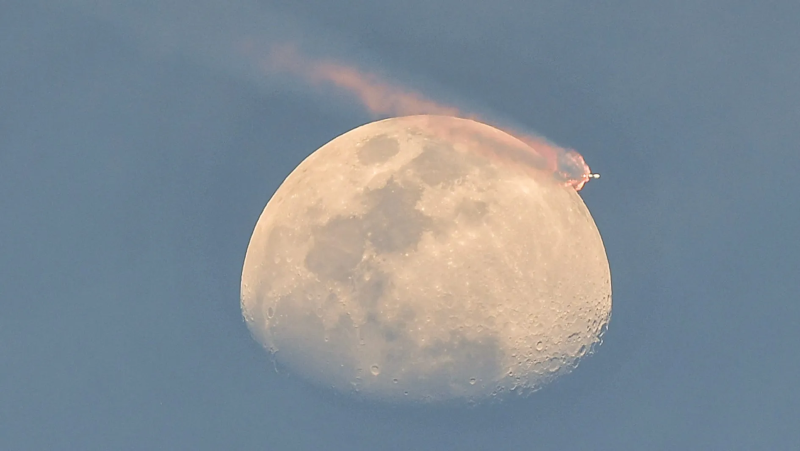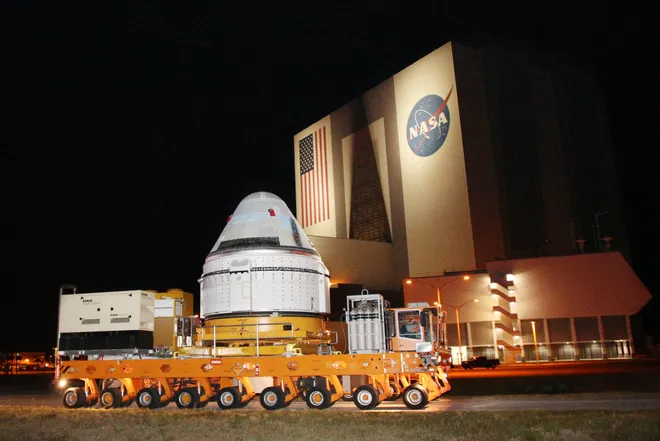Key rocket launch set for Monday: What to know about the Boeing Starliner carrying 2 astronauts
Boeing is finally ready to send two NASA astronauts to the International Space Station for the first time aboard its Starliner space capsule.
The CST-100 Starliner test mission scheduled for Monday night is years in the making and serves as a final demonstration before the spacecraft can be approved for routine trips to orbit. The stakes are high for the third and final orbital flight test for Starliner, as it's the first with a crew on board.
Just like Elon Musk's SpaceX capsule, Starliner is intended to be a vehicle that can ferry astronauts to and from the space station as NASA pivots to more partnerships with private industry. But Boeing has largely lagged behind its competitor, which launched its first crewed mission in 2020, according to Reuters.
Here's what to know about Monday's scheduled launched and how to watch it live.
China launches lunar probe:Mission is to get samples from far side of moon
What to know about the Boeing Starliner, crew
The Starliner was designed to accommodate no more than seven passengers for missions to low-Earth orbit. For NASA, the capsule is intended to carry four astronauts along with a mix of cargo and other scientific instruments to and from the ISS.

The two NASA astronauts flying the commercial crew mission are Barry "Butch" Wilmore and Sunita "Suni" Williams. Both are Navy test pilots who have flown in space twice, according to Florida Today, a USA TODAY Network publication.
- Williams, 58, is a former Naval test pilot with experience flying over 30 different aircraft. Selected as an astronaut in 1998, she has has logged 322 days in space over two missions since her first flight in 2007.
- Wilmore, 61, is a retired Navy captain who completed 21 combat missions during Operation Desert Storm before joining NASA in 200. Since then, he has logged 178 days in space after his first trip to orbit in 2009.
The astronauts will be in space for a little more than a week testing the Starliner spacecraft and its subsystems. After the mission, the pair will board the Starliner for a return trip to Earth and a parachute and airbag landing in the American Southwest.
“The first crewed flight of a new spacecraft is an absolutely critical milestone," NASA Associate Administrator James Free told reporters during a recent flight readiness review, according to Florida Today. "The lives of our crew members, Butch Wilmore and Suni Williams, are at stake. We don’t take that lightly at all.”
How to watch the Boeing Starliner launch
Boeing and NASA are targeting 10:34 p.m. ET on Monday for Starliner's launch from Kennedy Space Center in Florida. The capsule will fly to space on top of an Atlas V rocket.
NASA will provide live coverage beginning at 6:30 p.m. on NASA+, NASA Television, the NASA app, the agency's YouTube page and its website. A postlaunch news conference is also planned.
Watch here:
Expect more coverage when the Starliner is expected to dock to the forward-facing port of the International Space Station's Harmony module at 12:46 a.m. Wednesday.
What went wrong on past Boeing tests
Dozens of software and engineering issues resulted in the failure of a previous attempt in 2019 to send an uncrewed Starliner to the ISS for a week.
While it reached orbit, the capsule failed to reach the space station and instead returned to Earth, according to Florida Today. That mission raised questions and doubts about NASA's future with Boeing, which is scheduled to fly six crewed astronaut missions once it's certified as safe for flight, Reuters reported.
The follow up flight test in 2022 met standards of docking to the space station and successfully landed, but not without the discovery of multiple issues as Boeing crews inspected the spacecraft later on, Florida Today reported.
Engineers have expressed a high level of confidence about the upcoming launch, the outlet reported.
"Our process in human spaceflight is very robust. We design around redundancy," Mark Nappi, vice president and program manager of Boeing's Starliner program, said during a March NASA news conference. "We test, test, and test."

NASA paid Boeing, SpaceX to develop spacecraft
Boeing was selected along with SpaceX to provide spacecrafts that would transport astronauts to and from low-Earth orbit for NASA.

Boeing's contract with the U.S. space agency awarded in 2014 was good for $4.8 billion, while SpaceX received $3.1 billion, according to Florida Today.
The partnership is part of NASA’s commercial crew program in which the space agency is paying private companies to build spacecraft capable of ferrying trained astronauts to the space station for scientific missions. Under NASA's more ambitious Artemis lunar program, it's also paid SpaceX $2.9 billion to develop the first commercial human lander for the moon and eventually Mars.
In March, SpaceX had its most successful test yet of the Starship rocket needed for NASA's Artemis missions. While in orbit, the Starship hit several key milestones and conducted a handful of in-flight tests that are a crucial step forward for it to be reliable and functional.
SpaceX, whose Dragon spacecraft flew its first human mission in 2020, recently saw its Crew-7 return to Earth after nearly 200 days aboard the International Space Station. The eighth crew comprised of three NASA astronauts and one cosmonaut launched March 3 and docked March 5 to await the arrival of Boeing's Starliner capsule.
If the mission is a success, NASA will begin the final process of certifying Starliner and its systems for crewed rotation missions to the space station, according to NASA.
Contributing: Brooke Edwards, Florida Today
Eric Lagatta covers breaking and trending news for USA TODAY. Reach him at elagatta@gannett.com
Disclaimer: The copyright of this article belongs to the original author. Reposting this article is solely for the purpose of information dissemination and does not constitute any investment advice. If there is any infringement, please contact us immediately. We will make corrections or deletions as necessary. Thank you.






